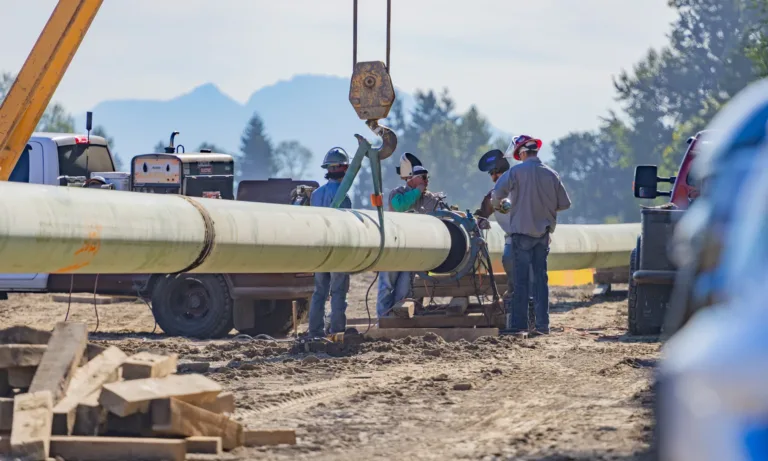
- Gas Pipelines
Project Highlights
- The installation of approximately six miles of a new 20-inch High-Pressure coated steel natural gas pipeline will improve pressure reliability and meet contract requirements.
- Coordination with multiple agencies and landowners to fast-track permitting, pipeline design, and easement acquisitions for a 2025 in-service goal.
- Provided comprehensive services including survey, permitting, pipeline design, environmental support, and construction services.
Project Description
The Anacortes Gas Transmission Pipeline Project for Cascade Natural Gas involved designing and installing a six-mile, 20-inch high-pressure pipeline through a complex corridor of jurisdictions and landowners. MacKay Sposito led project management, surveying, permitting, easement acquisition, pipeline design, and environmental compliance to ensure the pipeline would meet future demands and maintain reliable service for large commercial clients. A significant design challenge included a 3,600-foot horizontal directional drill (HDD) under Joe Leary Slough, I-5, a BNSF railroad, and a state highway.
The team coordinated with 40 property owners to secure nearly 45 easements, handling legal descriptions, compensation offers, crop loss calculations, and final recordings. Our firm also managed a multi-agency permitting effort, securing over 30 permits across federal, state, and local levels, requiring approvals from the U.S. Army Corps of Engineers (USACE), Washington Department of Fish and Wildlife (WDFW), Washington Department of Ecology (WDE), Washington State Department of Transportation (WSDOT), BNSF Railroad, City of Sedro-Woolley, Skagit County, and Skagit County Drainage and Irrigation District Consortium (SCDIDC). In total, we secured over 30 permits in support of the project.
Construction is underway as of summer 2025, with MacKay Sposito providing staking, as-builting, and full environmental compliance monitoring. The project enhances Cascade Natural Gas’s capacity to deliver safe, dependable service and highlights the importance of coordinated expertise in solving regulatory and engineering challenges.